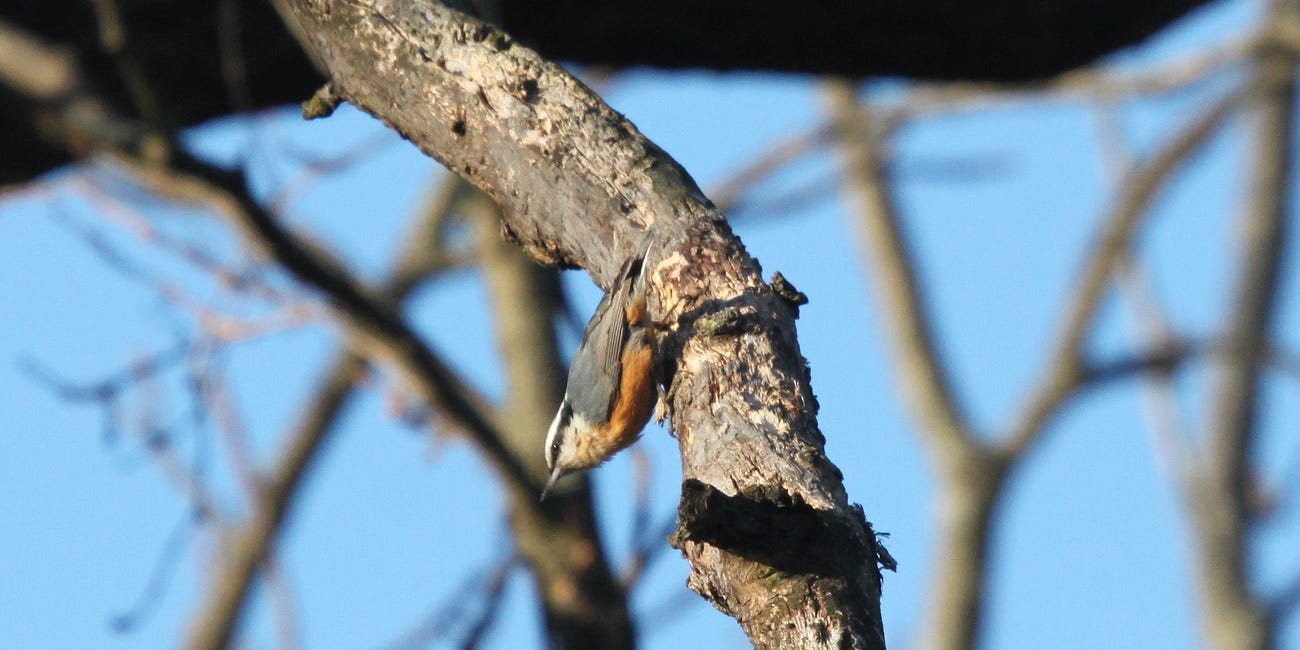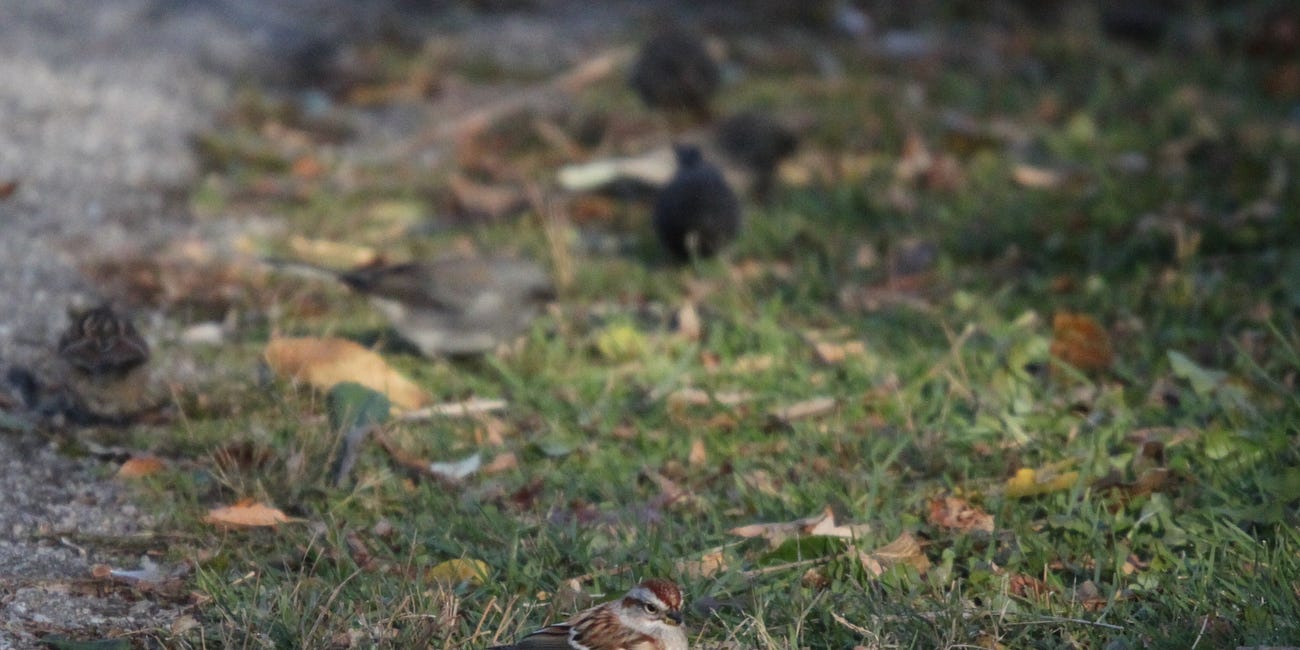I watched a little avian drama recently, before the deep freeze (more on that in a minute). It was a cold, steely gray day of the kind that are commonplace in winter. The Blue Jays had been calling all morning, but now they were doing so with some urgency. It had me thinking about possible nearby predators. Blue Jays are one of the louder species when a threatening raptor is around. Seconds later, a large bird that turned out to be a Red-tailed Hawk soared in and headed over the nearest slough before nestling into some distant trees.
The Blue Jays were still calling, and I was thinking of getting a photo of one, when they went into some mimicry that wasn’t quite right for Red-tailed Hawk but was right for a raptor species. This was the third time this year I’d observed a Blue Jay with a predator nearby that started to mimic the predator. I don’t know if that is to get the attention of other Blue Jays—to either join them to harass the predator or to simply make them aware of the threat. Then I saw a Cooper’s Hawk, an immature bird, perched stock-still and near the Blue Jays. The jays were around the hawk calling—at times imitating a Cooper’s Hawk (that was the call I was hearing!). Who needs the Merlin app when you have a situation like this.
For a while it was a stand-off, then one bold Blue Jay made a swoop at the hawk, which stood its ground. Mind you, Blue Jays are food for Cooper’s Hawks. This jay might have been the boldest of the bunch or an insouciant youth. Maybe it was the most experienced and knew it could get away with it. After all, the Cooper’s appeared to be a first-year bird. The Blue Jays lingered around the raptor, keeping their distance and even feeding a little bit, before seeming to lose interest in the escapade and starting to depart.
Then almost as soon as that happened, the Cooper’s Hawk turned around and made a lunge at one of the jays. It seemed a desperate move by the hawk. Birds of prey face an almost-constant need to hunt. As a younger bird, less than 1-year-old, it may indeed still be learning to hunt. Becoming a more experienced tactician takes practice.
All of the birds soon disappeared farther into the woods and out of sight, the hawk with its Blue Jay entourage.
Notes from Chiberia

Heavy snow was coming down during civil twilight on the morning of Friday, January 12. It was still mostly dark when the finches arrived on our feeder. That wasn’t something that was typical. It wasn’t extremely cold yet, but it marked a change in behavior. And they might have found a measure of comfort under the little plastic dome that protects the feeder.
Some other changes took place when it got really cold—about 36 hours later. The finches kept coming to the thistle feeder. So did the woodpeckers to our suet, the usual three species: Downy Woodpecker, Hairy Woodpecker, and Red-bellied Woodpecker. And an array of birds catching bits of food below—House Sparrows, Dark-eyed Juncos, Northern Cardinals, and Mourning Doves.
American Tree Sparrow isn’t a bird that we’ve seen much of this winter in the neighborhood. It seemed they didn’t leave the shrubby areas in the nearest forest preserve. Either that, or these Arctic birds simply hadn’t come that far south during our mild winter (before January 12 or so). This is the third time I’ve written about Tree Sparrows recently. They’re a species to keep track of, in the context of climate change and the Christmas Bird Count.
Two tree sparrows appeared under the feeder late in the day on January 13. Then several more appeared, a high count of eight the next day, when the temperature was below zero all day.
None other than Bernd Heinrich, author of Mind of the Raven, an amazing book, relates how birds survive extreme cold. He uses an example of Golden-crowned Kinglets that he found nestled together in a conifer in Maine:
On one evening I saw four kinglets disappear into a pine tree. Later that night, with extreme caution and armed with a flashlight, I climbed the tree and spied a four-pack of Golden-crowned Kinglets huddled together into one bunch, heads in and tails out, on a twig. One briefly stuck its head out of the bunch, and quickly retracted it—indicating it was staying warm, and not in cold torpor.
Birds face a constant, twofold challenge at these temperatures of staying warm and finding enough food. As Heinrich says, “most birds follow a simple formula: maximize calories ingested while minimizing calories spent.”
One last cold-weather episode took place on an icy jaunt through the neighborhood last week. A neighbor has taken it upon himself to dangle a suet feeder from his second-floor window sill. There also are some seeds on the sill itself. It’s the most modest of bird-feeding setups, but it shows the impact of even a little food source at this time of year.

If you liked this post, you also might like…







